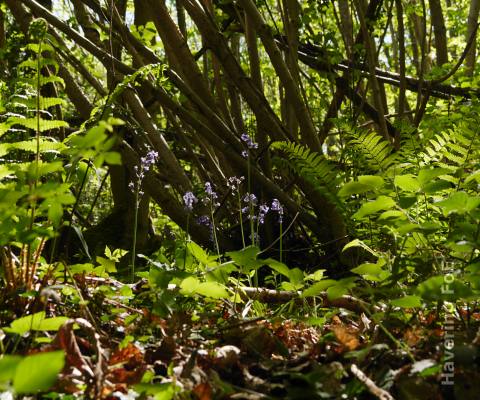Green Belt Biodiversity
by Ian Pirie; first published 25-Jul-2025

A community of woodland plants - John Robinson
I knew that the idea of a green belt around cities and towns was an old one, but I was surprised to learn that the term was coined as long ago as 1875! The Metropolitan Green Belt, around London, was first proposed in 1935. I contend that, over time, we have lost sight of the value of green belt land.
The aim of a green belt is twofold: to mark a limit to urbanisation, and to have an area where nature can flourish. There can be forests and farming, and footpaths, on green belt land, but, in modern planning jargon, its main characteristic is its "openness".
It should be obvious to all of us that we need to restrict the growth of cities and towns. We need open spaces. We need to "escape" – to the country or the seaside – to get away from the noise and pollution of town life.
What may be more difficult to grasp is the need to protect the biodiversity in green belt land. We need to realise, firstly, that every single living thing contributes in some way to the flourishing and even the survival of all of nature, and, secondly, that the more different components there are in nature, the healthier it is as a whole.
Gardeners know, for example, that if you plant marigolds, they will keep away aphids and other pests. The botanist Robin Wall Kimmerer explains why golden rod and aster flowers are often found together: their contrasting gold and blue colours make it easier for pollinators to find them.
This last example is astonishing, isn't it? What has happened is that the two plants have evolved, over thousands of years, to grow together, because it makes their survival more likely.
The organisation Plantlife says that, in any natural environment, the "unique interplay of geology, weather, and grazing animals have favoured particular communities of plants, which form relationships with... the soil. Layers and layers of soil have built over time... and are home to wiggling earthworms, busy insects, and a whole planet-worth of microbes".
So, what lesson can we draw from this? My answer is that destroying the green belt and simply planting "replacements" somewhere else just will not work. Sadly, the government now thinks that "biodiversity net gain" (a requirement for developers) can be ensured by destroying age-old natural environments and paying to have new plants put in somewhere else.
![[Earth icon]](../emblem64.jpg)